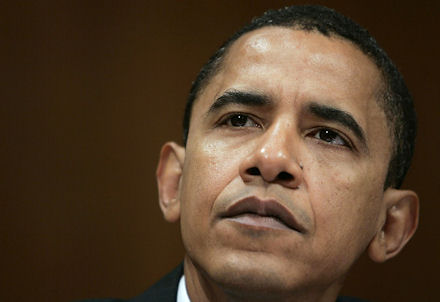national question
The Tamil question in Sri Lanka

By Chris Slee
October 5, 2008 -- On January 2, 2008, the Sri Lankan government formally renounced the ceasefire agreement with the Liberation Tigers of Tamil Eelam (LTTE), which a previous government had signed in February 2002. But by the beginning of 2008 the ceasefire already existed only on paper. Violence, which had been escalating for several years, had by then reached the level of full-scale war.
Canadian election: Left and labour movement discuss way forward
A selection of articles from Canadian socialists discussing the October 14 federal election and the debates and discussions in the Canadian and Quebec left and labour movements on electoral tactics.
Lessons of the Caucasus war: Imperial ambitions need to be opposed
By Andrey Kolganov and Aleksandr Buzgalin, translated by Links International Journal of Socialist Renewal’s Renfrey Clarke
Behind the communal flare-up in Jammu and Kashmir
By the Communist Party of India (Marxist-Leninist) Liberation
August 18, 2008 -- The communally and politically motivated May 26 decision of the Congress Party-People's Democratic Party (PDP) government of the Indian state of Jammu and Kashmir to transfer forest land [in Muslim-majority Kashmir] to the Hindu Shri Amarnath Shrine Board (SASB) [for use as a pilgrimage site near a sacred Hindu cave] is having costly repercussions, with the added danger that it may emerge as a communal [flashpoint] nationally.
The land transfer, taken in the context of irresponsible official remarks recommending changes in the demography and “culture” of the region as a “solution” to the Kashmir “problem”, was like a spark to the tinderbox of pent-up resentment in the Kashmir Valley. Lives were lost when police opened fire on protesters; the PDP tried to distance itself from its ministers’ decision in favour of the land transfer by pulling out of the government; and the government on July 1 was belatedly forced to roll back the land transfer decision.
Nationalism, revolution and war in the Caucasus
By Tony Iltis
August 27, 2008 -- Since the European Union-brokered ceasefire brought the shooting war between Georgia and Russia to an end on August 12, there has been a war of words between Russia and the West. One point of contention is the withdrawal of Russian troops from Georgia-proper (that is, Georgia excluding the de facto independent territories of Abkhazia and South Ossetia), in particular the towns of Gori, Zugdidi and Senaki and the port of Poti.
The war began with Georgia’s August 7 attack on the territory of South Ossetia. Russia responded with a military assault that first drove Georgian troops out of South Ossetia, then continued to advance within Georgia-proper.
Russia agreed to withdraw when it signed the ceasefire and has since indicated that it is doing so — but slowly, and not before systematically destroying Georgia’s military capacity.
A bigger difference, based on competing interpretations of what is and isn’t Georgian territory, is Russia’s stated intention to maintain a beefed-up peacekeeping presence in South Ossetia and Abkhazia.
Russia-Georgia: Behind the war on South Ossetia
By Tony Iltis
August 16, 2008 -- On August 7, after a week of border clashes, Georgia's pro-Western President Mikheil Saakashvili launched a military attack against South Ossetia.
South Ossetia, while internationally recognised as part of Georgia, has been predominantly under the control of a pro-independence administration since Georgia separated from the former Soviet Union in 1991. Since a 1992 ceasefire, the South Ossetian statelet has been protected by Russian peacekeepers.
Within 24 hours, Georgian troops had taken the South Ossetian capital, Tskhinvali, after destroying much of it with artillary. More than 30,000 refugees (out of a population of 70,000) fled across the border to the Republic of North Ossetia-Alania, which is part of the Russian Federation.
Using this, and the killing of 20 Russian peacekeepers, as pretexts, Russia intervened in full force: bombing targets throughout Georgia, driving the Georgians out of South Ossetia (including territory not previously held by the South Ossetian administration) and crossing into Georgia-proper to take the town of Gori.
Martin Luther King's last struggle -- a talk by Brian Jones
Teacher and actor Brian Jones educated and moved his audience with his talk, “Martin Luther King's last struggle'' at the United States' International Socialist Organization's “Socialism 2008'' conferenc
Olympics 1968: Black Power Salute
At the 1968 Mexico City Olympic Games the enduring image was Tommie Smith and John Carlos, African-American athletes, raising their gloved clenched fists in support of the Black Power movement during the “Star Spangled Banner''.
NATO's Balkan war and the Kosova liberation struggle
By Doug Lorimer
[The general line of this report was adopted by the June 12-14, 1999 DSP National Committee plenum. Text is taken from The Activist, volume 9, number 5, 1999]
On Wednesday March 24, 1999, the secretary-general of NATO, former Spanish social-democratic minister of culture Javier Solana, told a press conference: "I have just given the order to the Supreme Commander of Allied Forces in Europe, United States General Wesley Clark, to begin air operations against the Federal Republic of Yugoslavia."
The following day 371 NATO warplanes undertook bombing raids and six NATO warships in the Adriatic launched cruise missiles against targets in the Federal Republic of Yugoslavia.
Between March 25 and the cessation of NATO bombing raids on June 9, more than 30,000 combat missions had been flown by NATO warplanes against Yugoslavia. Thousands of civilians in Serbia have been killed or wounded. Millions of Serbian workers are now living without electricity, or water, or jobs. Factories, power stations, houses, hospitals, bridges and roads have been destroyed or damaged. The destruction of oil refineries and petrochemical plants have poisoned the air, rivers and soil of Serbia with toxic products. It has been estimated that the reconstruction of damaged or destroyed infrastructure will cost between $US15-50 billion.
